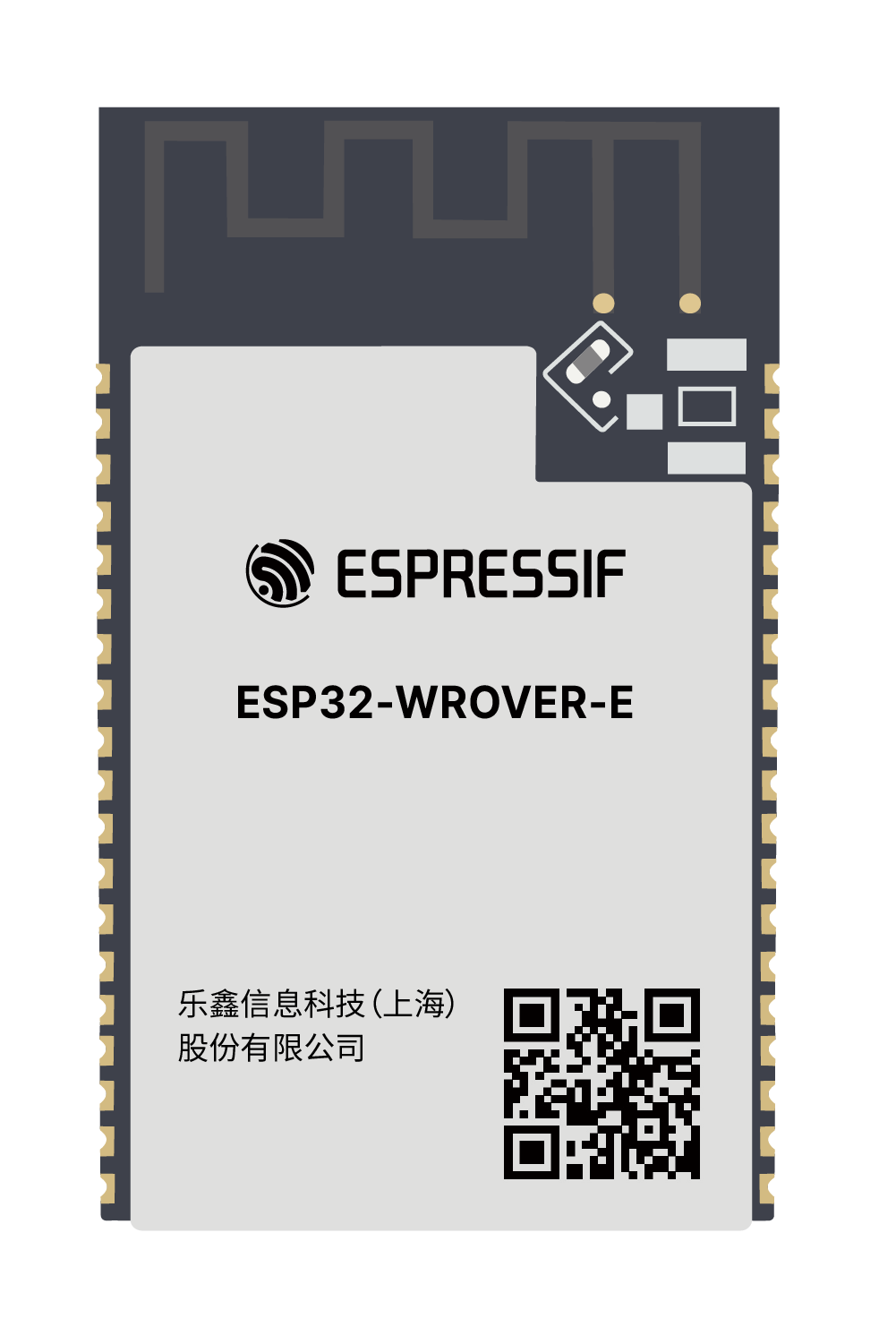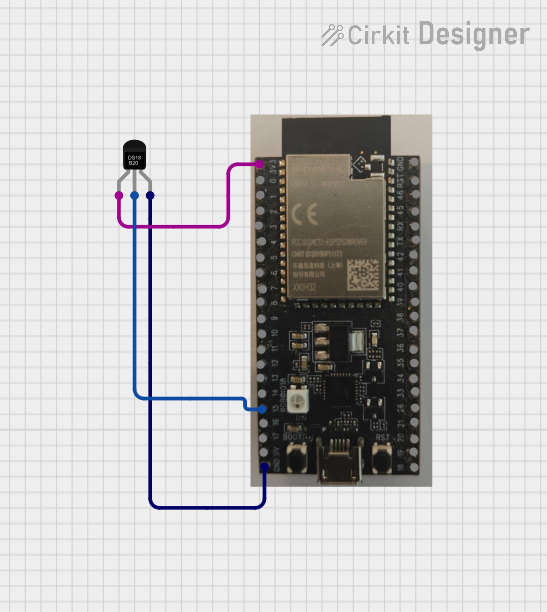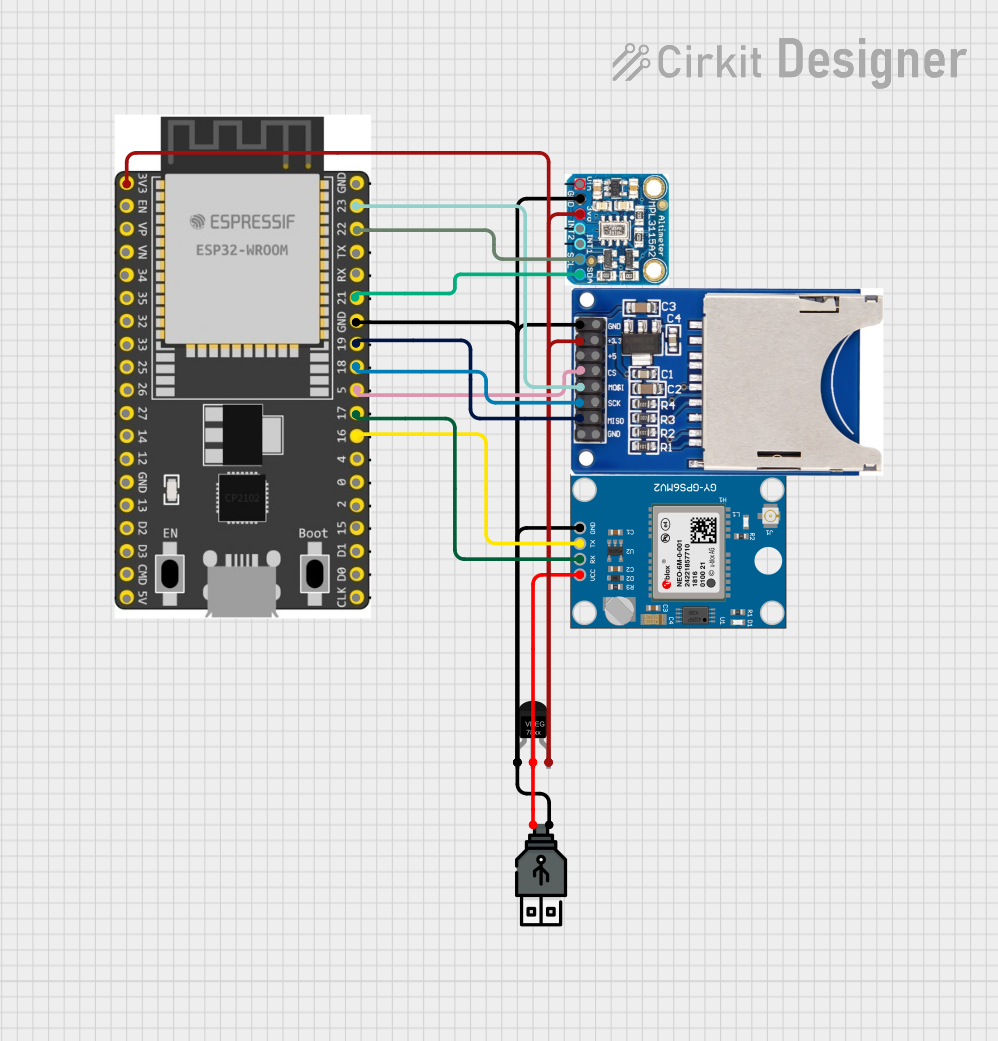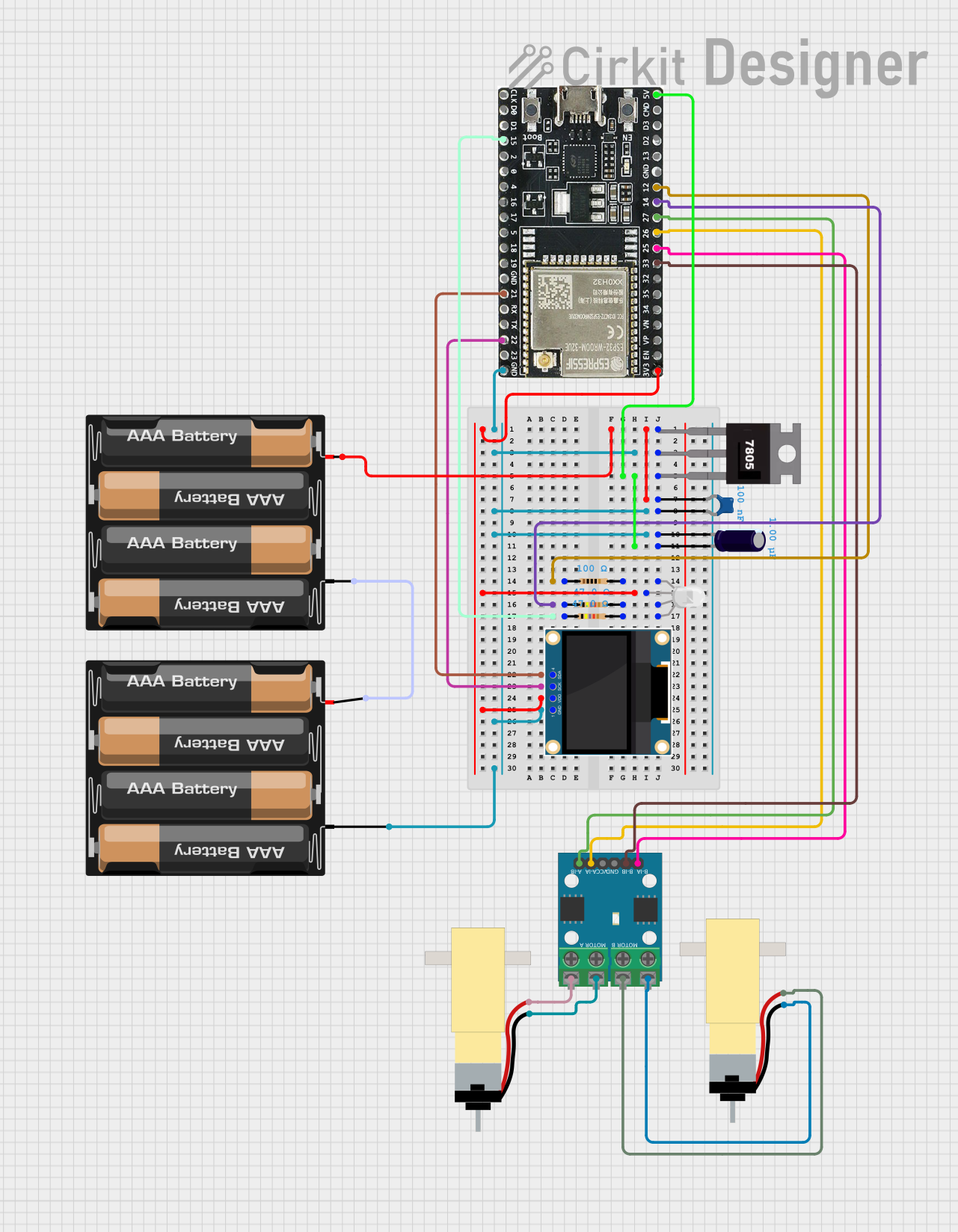
How to Use ESP32-WROVER-E: Examples, Pinouts, and Specs

 Design with ESP32-WROVER-E in Cirkit Designer
Design with ESP32-WROVER-E in Cirkit DesignerIntroduction
The ESP32-WROVER-E is a high-performance Wi-Fi and Bluetooth microcontroller module developed by Espressif Systems. It features dual-core processing, integrated flash storage, and ample memory, making it an excellent choice for a wide range of IoT (Internet of Things) applications. With its robust wireless connectivity and processing power, the ESP32-WROVER-E is ideal for smart home devices, industrial automation, wearable electronics, and more.
Explore Projects Built with ESP32-WROVER-E

 Open Project in Cirkit Designer
Open Project in Cirkit Designer
 Open Project in Cirkit Designer
Open Project in Cirkit Designer
 Open Project in Cirkit Designer
Open Project in Cirkit Designer
 Open Project in Cirkit Designer
Open Project in Cirkit DesignerExplore Projects Built with ESP32-WROVER-E

 Open Project in Cirkit Designer
Open Project in Cirkit Designer
 Open Project in Cirkit Designer
Open Project in Cirkit Designer
 Open Project in Cirkit Designer
Open Project in Cirkit Designer
 Open Project in Cirkit Designer
Open Project in Cirkit DesignerCommon Applications and Use Cases
- IoT devices and smart home systems
- Wireless sensor networks
- Industrial automation and control systems
- Wearable electronics
- Audio streaming and voice recognition systems
- Prototyping and development of connected devices
Technical Specifications
The ESP32-WROVER-E module is designed to deliver high performance and flexibility. Below are its key technical specifications:
Key Technical Details
| Parameter | Specification |
|---|---|
| Manufacturer | Espressif Systems |
| Part ID | ESP32-WROVER-E |
| Microcontroller | ESP32-D0WDQ6 dual-core processor |
| Wireless Connectivity | Wi-Fi 802.11 b/g/n, Bluetooth v4.2 BR/EDR and BLE |
| Flash Memory | 16 MB (integrated) |
| PSRAM | 8 MB |
| Operating Voltage | 3.0V to 3.6V |
| Operating Temperature | -40°C to +85°C |
| GPIO Pins | 36 (multipurpose, including ADC, DAC, PWM, etc.) |
| Communication Interfaces | UART, SPI, I2C, I2S, CAN, Ethernet MAC |
| Power Consumption | Ultra-low power in deep sleep mode (~10 µA) |
| Dimensions | 18 mm x 31.4 mm |
Pin Configuration and Descriptions
The ESP32-WROVER-E module has a total of 38 pins. Below is a table describing the key pins:
| Pin Number | Pin Name | Function Description |
|---|---|---|
| 1 | GND | Ground |
| 2 | 3V3 | 3.3V power supply input |
| 3 | EN | Enable pin (active high) |
| 4 | IO0 | GPIO0, used for boot mode selection |
| 5 | IO2 | GPIO2, general-purpose I/O |
| 6 | IO4 | GPIO4, general-purpose I/O |
| 7 | IO5 | GPIO5, general-purpose I/O |
| 8 | IO12 | GPIO12, general-purpose I/O |
| 9 | IO13 | GPIO13, general-purpose I/O |
| 10 | IO14 | GPIO14, general-purpose I/O |
| ... | ... | ... (Refer to the datasheet for full pinout) |
For the complete pinout and detailed descriptions, refer to the official datasheet provided by Espressif.
Usage Instructions
The ESP32-WROVER-E is versatile and can be used in a variety of circuits. Below are the steps and best practices for using the module:
How to Use the ESP32-WROVER-E in a Circuit
- Power Supply: Ensure the module is powered with a stable 3.3V supply. Avoid exceeding the maximum voltage of 3.6V.
- Boot Mode: To upload code, connect GPIO0 to GND during reset to enter bootloader mode.
- Connections: Use the UART pins (TXD0, RXD0) for programming and debugging. Connect the EN pin to 3.3V through a pull-up resistor.
- Antenna: Ensure the onboard antenna has a clear path for optimal wireless performance.
- Programming: Use the Arduino IDE, ESP-IDF, or other supported development environments to program the module.
Example: Connecting to an Arduino UNO
The ESP32-WROVER-E can be programmed using the Arduino IDE. Below is an example code snippet to connect the module to a Wi-Fi network:
#include <WiFi.h> // Include the Wi-Fi library for ESP32
// Replace with your network credentials
const char* ssid = "Your_SSID";
const char* password = "Your_PASSWORD";
void setup() {
Serial.begin(115200); // Initialize serial communication
delay(1000); // Wait for the serial monitor to initialize
Serial.println("Connecting to Wi-Fi...");
WiFi.begin(ssid, password); // Start Wi-Fi connection
// Wait until the ESP32 connects to the Wi-Fi network
while (WiFi.status() != WL_CONNECTED) {
delay(500);
Serial.print(".");
}
Serial.println("\nWi-Fi connected!");
Serial.print("IP Address: ");
Serial.println(WiFi.localIP()); // Print the assigned IP address
}
void loop() {
// Add your main code here
}
Important Considerations and Best Practices
- Power Supply: Use a low-noise, regulated 3.3V power supply to avoid instability.
- GPIO Voltage Levels: Ensure all GPIO pins operate at 3.3V logic levels. Avoid 5V signals.
- Antenna Placement: Keep the antenna area free from metal objects to ensure optimal wireless performance.
- Deep Sleep Mode: Use deep sleep mode to minimize power consumption in battery-powered applications.
Troubleshooting and FAQs
Common Issues and Solutions
Module Not Responding
- Cause: Incorrect power supply or wiring.
- Solution: Verify the power supply voltage (3.3V) and check all connections.
Wi-Fi Connection Fails
- Cause: Incorrect SSID or password.
- Solution: Double-check the network credentials in your code.
Code Upload Fails
- Cause: GPIO0 not grounded during reset.
- Solution: Ensure GPIO0 is connected to GND when uploading code.
Unstable Operation
- Cause: Noisy power supply or improper grounding.
- Solution: Use a decoupling capacitor (e.g., 10 µF) near the power pins and ensure proper grounding.
FAQs
Q: Can the ESP32-WROVER-E be powered with 5V?
A: No, the module operates at 3.3V. Exposing it to 5V can damage the module.
Q: How do I reset the module?
A: Pull the EN pin low momentarily to reset the module.
Q: Can I use the ESP32-WROVER-E with the Arduino IDE?
A: Yes, the ESP32-WROVER-E is fully compatible with the Arduino IDE. Install the ESP32 board package to get started.
Q: What is the maximum range of the Wi-Fi connection?
A: The range depends on environmental factors but typically extends up to 100 meters in open space.
For additional support, refer to the official Espressif documentation and community forums.